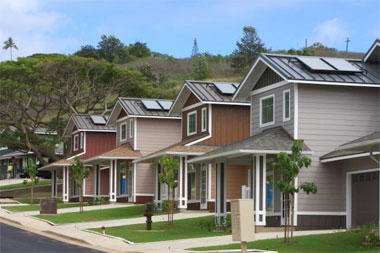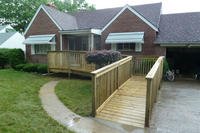You may know that the VA loan is a great benefit of military service, but have you ever wondered how the VA loan came to be? Well, wonder no more. Read on and find out everything you’ve ever wanted to know about the VA loan.
A VA loan is a mortgage loan in the United States guaranteed by the U.S. Department of Veterans Affairs (VA). The loan may be issued by qualified lenders.
The VA loan was designed to offer long-term financing to eligible American veterans or their surviving spouses (provided they do not remarry). The basic intention of the VA direct home loan program is to supply home financing to eligible veterans in areas where private financing is not generally available and to help veterans purchase properties with no down payment. Eligible areas are designated by the VA as housing credit shortage areas and are generally rural areas and small cities and towns not near metropolitan or commuting areas of large cities.
The original Servicemen’s Readjustment Act, passed by the United States Congress in 1944, extended a wide variety of benefits to eligible veterans. The VA loan guarantee program was especially important to veterans. Under the law, as amended, the VA is authorized to guarantee or insure home, farm, and business loans made to veterans by lending institutions. Over the history of the program, 18 million VA home loans have been insured by the government. The VA can make direct loans in certain areas for the purpose of purchasing or constructing a home or farm residence, or for repair, alteration, or improvement of the dwelling. The terms and requirements of VA farm and business loans have not induced private lenders to make such loans in volume during recent years.
The Veterans Housing Act of 1970 removed all termination dates for applying for VA-guaranteed housing loans. This 1970 amendment also provided for VA-guaranteed loans on mobile homes.
More recently, the Veterans Housing Benefits Improvement Act of 1978 expanded and increased the benefits for millions of American veterans.
Until 1992, the VA loan guarantee program was available only to veterans who served on active duty during specified periods. However, with the enactment of the Veterans Home Loan Program Amendments of 1992 (Public Law 102-547, approved 28 October 1992), program eligibility was expanded to include Reservists and National Guard personnel who served honorably for at least six years without otherwise qualifying under the previous active duty provisions. Such personnel are required to pay a slightly higher funding fee when obtaining a VA home loan.
Despite a great deal of confusion and misunderstanding, the federal government generally does not make direct loans under the act. The government simply guarantees loans made by ordinary mortgage lenders (descriptions of which appear in subsequent sections) after veterans make their own arrangements for the loans through normal financial circles. The Veterans Administration then appraises the property in question and, if satisfied with the risk involved, guarantees the lender against loss of principal if the buyer defaults.
In association with the VA’s program, the Servicemembers’ Civil Relief Act protects service members from financial woes on their home loan that may occur as a result of active duty commitments, freezing their interest rates at 6%.
As you can tell, the program has evolved greatly over the years to benefit and protect servicemembers and veterans. If you are interested in using your VA loan benefit, the first step is to find a lender that participates in the program. Our VA loan finder can match you with up to five rate quotes from different lenders - get started today!









